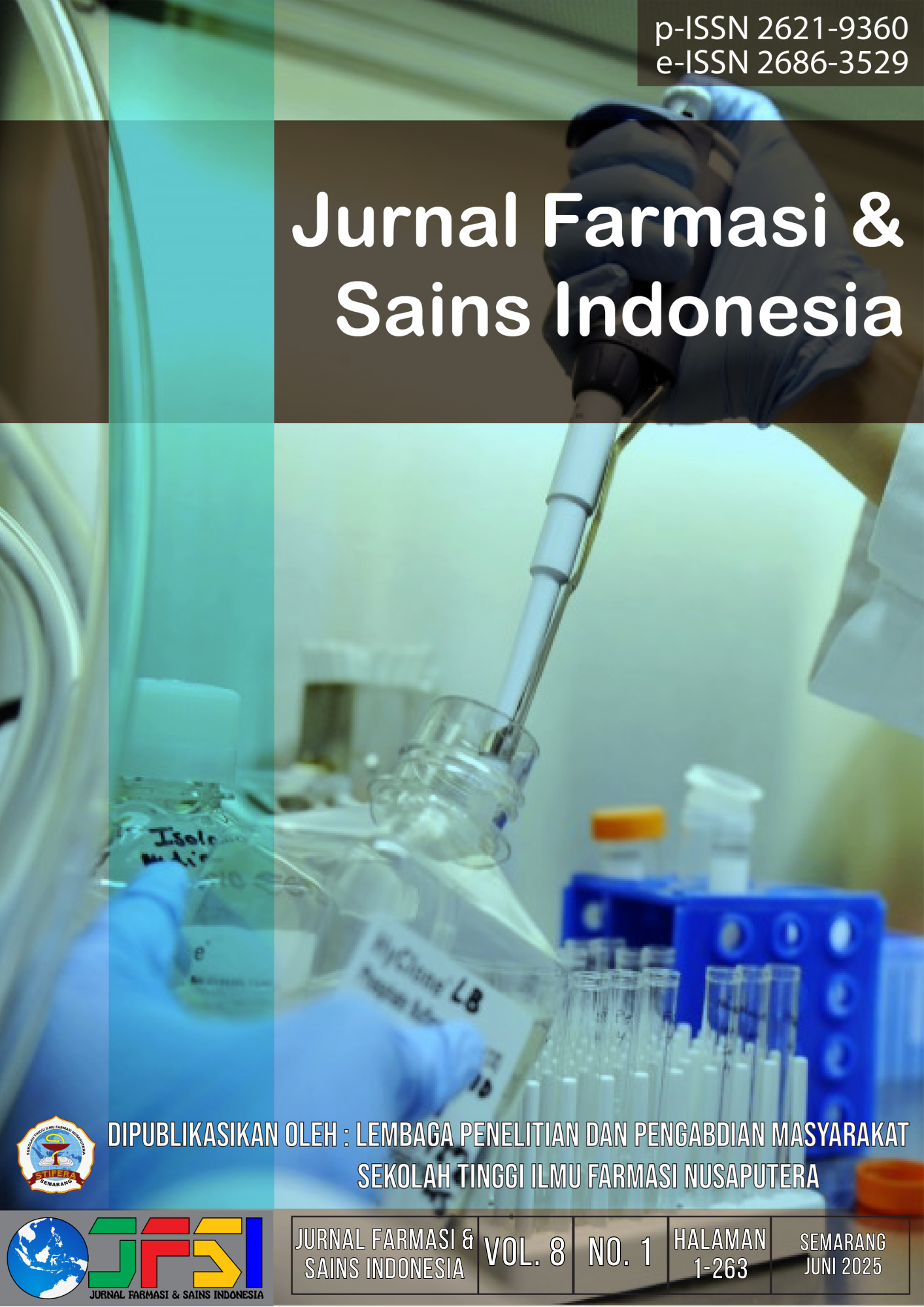Utilization of Grapefruit Peel Essential Oil (Citrus maxima) as an Antibacterial Alternative for Staphylococcus epidermidis and Staphylococcus aureus in Spray Deodorants
Main Article Content
Abstract
Cleanliness and body odor are major and important factors of personal hygiene and appearance. If a person's body smells good, their self-confidence will be higher. Using soap and water as a body wash when bathing is relatively ineffective in preventing body odor. So several other alternative actions can be taken, such as using anti-body odor cosmetic preparations (deodorant). This research aims to determine whether grapefruit peel (Citrus maxima) essential oil can be formulated as a spray deodorant that meets physical quality requirements and to determine its antibacterial effectiveness on Staphylococcus epidermidis and Staphylococcus aureus. The method used in this research is experimental with a formula design divided into four formulas, F0 without essential oil, F1 with the addition of 0.5% essential oil, F2 with the addition of 1% essential oil, and F3 with the addition of 1.5% essential oil. The finished doedorant preparation was then subjected to organoleptic testing, homogeneity, pH, dry time, spraying pattern, cycling test for 6 cycles, and antibacterial activity test. The results of this research show that grapefruit peel (Citrus maxima) essential oil can be made into a spray deodorant that meets physical quality requirements. The results of the research show that the formulation has antibacterial activity against Staphylococcus aureus bacteria, with an F1 inhibition zone of 0.5% 3.8 mm (weak), F2 1% 4.5 mm (weak), F3 1.5% 15.2mm (strong). In Staphylococcus epidermidis bacteria, the inhibition zone is F1 0.5% 3.5 mm (weak), F2 1% 4.6 mm (weak), and F3 1.5% 14.8 mm (strong).

